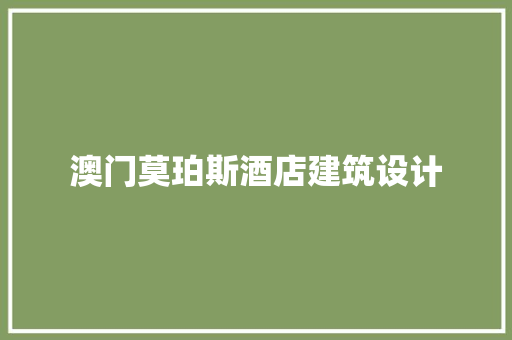东侧游客中央 ©张超
侨城北公园游客中央坐落于深圳市中央一处被高强度建筑开拓所包围的原生态树林山丘。如何在这座原生态的山林之中置入根本性的公共做事举动步伐,同时保护原生自然环境,是建筑师所面对的寻衅。

西侧公共卫生间 ©张超
Qiaochengbei Park Visitor Center is situated on a hillside covered with pristine forest, surrounded by high-density urban development in the central area of Shenzhen. The forest’s untouched nature presents a challenge for the architects: how to incorporate essential public-service facilities into the park while preserving the original natural environment?
地形总图 ©一树建筑
建筑师提出完全保留所有原生树木,将相距200米的两座做事建筑,分别以弧形与方形的不同姿态,小心穿插在树木之间,以最小参与的办法完成了对园地的重塑:东侧建筑被以树木为圆心的无形圆弧切割而成,使其蜿蜒身姿得以迂回流转于树木之间;
The architects proposed preserving all native trees by strategically interweaving two service buildings among them with minimal disturbance to the site. The curvilinear east building is shaped by invisible arcs centered on the trees, allowing its winding form to elegantly meander among the trunks and bushes.
东侧游客中央轴测图 ©一树建筑
东侧游客中央鸟瞰 ©张超
西侧建筑由一系列梯形方体组成,这些构造悬挑、嵌入或置于地面上,它们构成一组“金属阵列”锚定方位,并与森林的自然节奏相呼应。
The west building features a series of trapezoidal structures that are either cantilevered, embedded, or placed on the ground. These structures act as “metal henges” that anchor directionality and resonate with the natural rhythm of the forest.
西侧公共卫生间轴测图 ©一树建筑
西侧公共卫生间鸟瞰 ©张超
为匆匆成新建物与自然环境之间的和谐对话,建筑材料选用可随韶光优雅老去的耐候钢,初始状态靠近林中原生树木树干的颜色,随着韶光颜色不断变革,并逐渐产生保护性锈层以减少日后掩护。
To facilitate a harmonious dialogue between the new structures and the natural environment, weathering steel, known for its graceful aging aesthetics, was chosen as the building material. Initially resembling the color of the native tree trunks in the forest, this steel will gradually change color over the years, developing a protective layer of rust that reduces future maintenance needs for the facade.
耐候钢随韶光不断变革并逐渐产生保护性锈层 ©张超、一树建筑
随韶光变革的立面材料vs随时令变革的景不雅观状态 ©张超、一树建筑
地处亚热带酷热湿润的景象,建筑设计中以架空平台、竖向格栅及穿孔立面等办法供应充足遮阳及透风,减少对空调的依赖。终极除了三间办公室和两间母婴室配备了空调设备外,其他公共空间都采取自然透风,并辅以除臭系统以确保卫生间的清洁和清新。
Given the hot and humid climate, the architectural design integrates vertical louvers and perforated metal into the facade to provide ample shade and ventilation. This promotes a passive environmental design strategy that relies less on air conditioning. Eventually, except three offices and two nursing rooms that are equipped with air conditioning, all other public spaces utilize natural ventilation, complemented by a deodorizing system to ensure cleanliness and freshness of the restrooms.
东侧游客中央以竖向格栅供应遮阳与透风,并与水平景窗与自然互动 ©张超
东侧游客中央的立面格栅角度可根据内部功能需求旋转调度 ©张超
格栅平面细部 ©一树建筑
西侧卫生间以穿孔立面供应自然透风与遮阳 ©张超
男卫生间内部空间与光影 ©张超
女卫生间景窗与内院 ©张超
两座建筑都位于缓坡上,因此设计谋略中只管即便减少挖掘并将建筑体部分嵌入土中,利用覆土层的保温浸染提高节能效率。此外建筑的栽种屋顶柔化了几何边缘,降落了径流系数,并减少了夏季制冷负荷。
Both structures, situated on gentle slopes, are tactically oriented to minimize excavation. Partially embedded in the earth, they leverage earth sheltering for enhanced energy efficiency. Additionally, green roofs on both buildings soften the geometric edges, thereby reducing runoff coefficients and summer cooling loads.
两座建筑嵌入地形之中并以栽种屋面覆盖 ©张超
总体而言,男女卫生间、自动售卖、直饮水、母婴室、清洁工安歇间等传统意义上的做事性功能被塑造为围合公共场所的主要组成要素,让公园游客做事举动步伐及卫生间形成一个穿插于林间的微缩村落落,成为与自然共生的做事及休闲场所。
Overall, traditionally defined “service spaces”, such as restrooms, vending machines, drinking water stations, nursing rooms, and rest areas for cleaners, are integrated as vital components of the enclosed public space. This conceptualization transforms the park’s visitor facilities and public toilets into a miniature village, serving as both an amenity and a leisure area that coexists pleasantly with nature.
项目名称:侨城北公园游客中央建成韶光:2023项目地址:广东省深圳市南山区培植单位:深圳市南山区城市管理和综正当律局代建单位:华润置地深圳大区城市培植奇迹部
建筑及室内方案设计:一树建筑事情室主持建筑师:陈曦设计团队:朱珠、叶方南、黄圳锋、翁策楷、陈述、何孟凝、张景翔
公园设计总包 & 景不雅观设计:深圳文科园林株式会社建筑及室内施工图设计:内蒙古北方时期设计研究院施工单位:深圳市方森园林花卉有限公司
拍照师: 张超
资料来源、版权所有:一树建筑事情室









